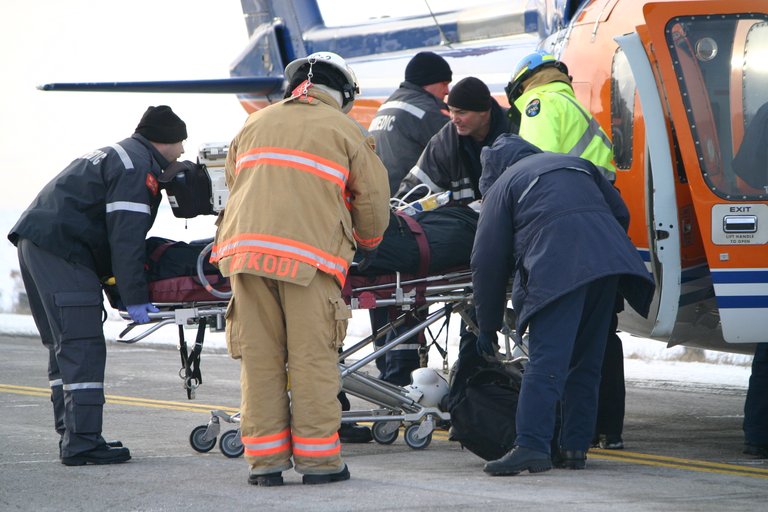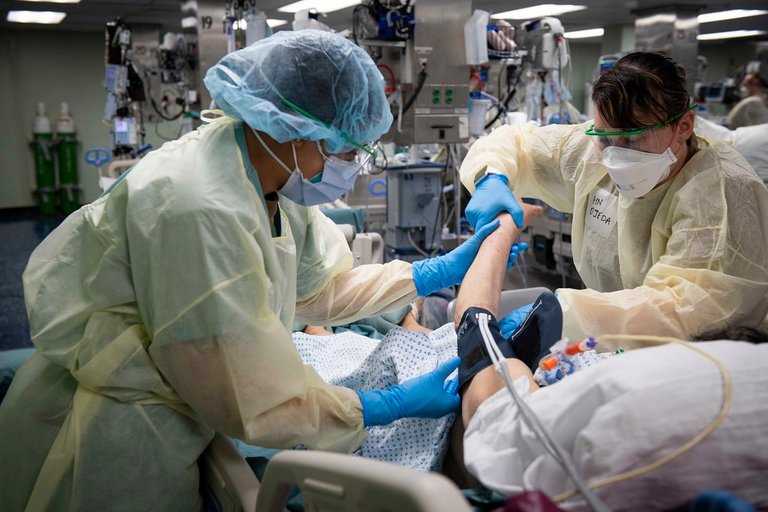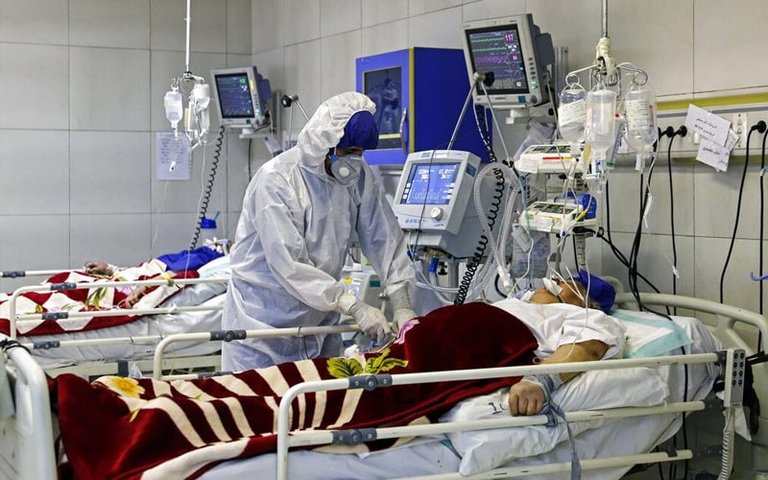There is a problem with Nigerian Healthcare system and that is the lack of transferable patients health data or better still readily available health data of patients. When you go to a hospital in Nigeria, they open a file for you, give you a small card, and whatever diagnosis or treatment you get from the hospital is kept in the hospital in some record room with so many paper files.
If you decide to change location and go to a different hospital for treatment or a checkup, the doctor never asks of your previous medical history nor look at any previous diagnosis, all they do is create a new card for you which you would pay for, and open a new file for you. This is done both in private hospital and in public hospitals and so patients medical histories cannot be easily accessed by another doctor from a different hospital.

I checked for a case report where this issue has led to a serious medical problem or a patient suffered misdiagnosis or any of such but I didn't find, not because it hasn't happened or it doesn't happen, but because there are no documented issues about it but the case of Jennifer Nibarger born on January 13th 1966 caught my attention.
Growing up, she was a lively person and because she loved medicine, she studied nursing at the college of Mount St Joseph at the time but now known as Mount St Joseph University in Cincinnati Ohio after which she worked at the children's hospital in Cincinnati for a while after which she worked at United Healthcare but didn't end her career there, she went on to work at Medtronic, a medical tech company but then moved to Masimo Corporation. Due to her love for healthcare, she would work during her free time as a volunteer at the Juvenile Diabetes Research Foundation. She loved children a lot and also loved decorating for event.
In 2011, she got married to Brent Nibarger and was 47 as at the time when this medical issue happened. At some point in her life, she moved to Henderson, Nevada. She enjoyed hiking, and going on boat cruise, in general she was a fun person to be with. She and her her husband went out on September 21st 2013 to the lake Mead for boating. While they were driving the boat, the steering of the boat malfunctioned and the boat faced one direction towards a rock wall and they ended up colliding against the wall. The accident left everyone with injuries but that of Jennifer was severe because she crashed against several metals on the boat which led to the broken bones, head and neck trauma, and external lacerations.

She was airlifted thanks to emergency service to a level 1 trauma center. At the center, medical practitioners noticed that she was having problem breathing. Her husband was also in the hospital as a patient but he was getting better the next day and it was then he realized that his wife was placed on medically induced coma and on life support. A peg tube was placed in her abdomen for nutrient, and a tracheostomy tube to help with breathing and she was in coma for 3 weeks.
While she was being treated, she began to develop hospital acquired conditions which were ventilator Associated pneumonia, Urinary Tract Infection, and bloodstream infection. On the 4 week in the hospital, she began to regain consciousness and was able to breath through the Tracheostomy so she was to be discharged from the trauma unit to the Long-Term Care Facility.
On the first 2 days, she was getting better but things began to go south on the third day as a result of the infection in the Trach and her abdomen. She was transferred to another hospital but this time a community hospital when she stayed. After 2 weeks, she was looking better as everything that were attached to her were removed except from the Tracheostomy and she was able to do everything that was needed like walking, talking, using the toilet, and so on, and was looking forward to eating soft foods.

After 7 weeks and three different hospitals, she was going to be discharged to go home Octorber 30th 2013 but had to receive physical rehabilitation from the hospital at home but would have to do routine test including a Barium Swallow Test. She took the Barium and the radiologist took the image and noticed that the barium was leaking out of her esophagus and into her lungs and it was at the time they noticed she had a Tracheoesophageal fistula (TEF) which is a hole formed within the windpipe and the esophagus.
The barium going to her lungs caused her respiratory distress. If the hospital knew she had a fistula, they would have used a water soluble contrast agent like Gastrografin. She was going to stay in the hospital for more days and she was transferred from one unit to another but the respiratory distress continued to worsen. The team of doctors thought she was experiencing Anxiety and treated her with Ativan with the believe that she was suffering respiratory distress but soon they had returned her back to the ICU but there were no rooms available at the ICU so they returned her to the recovery and another team of doctors talked about what to do and agreed on putting her on a ventilator to her breath but they didn't take into account the Tracheoesophageal fistula (TEF) because they didn't know she had it.
They placed on a ventilator and kept on increasing the oxygen rate and cycle rate of the ventilator until it reached 40 cycles per minute and 100% oxygen concentration. There was no test performed on her at this unit, they just kept giving oxygen. They didn't check the End-tidal carbon dioxide (ETCO2) so she continued to experience respiratory distress and increased ETCO2 and the air wasn't going to her lungs rather it was going to her stomach. Her body and organs were deprived of oxygen and this led to organ shutdown at 12:04AM on the 30th of October 2013.

A Code blue was announced and a cold blue team tried to save her from the cardiac arrest performing CPR for 14 minutes before her heart was restored. They then realized that her abdomen had increased 4 times its original size as a result of the air being pumped in. They began to perform an emergency pressure relief through her abdomen, removed the Tracheostomy and intubated her using a longer ET tube so the air can reach the body but there was damage already to her brain as it had suffered oxygen loss and she was not responsive. For another three weeks, she was kept on life support and tests, and scans were done and the results came back same that she had suffered unrecoverable brain damage so the family decided to take her off life support which was done on Tuesday 19th 2013 and she passed away.
Her husband gave interviews and he continually stated that the problem was improper medical handoffs of medical records from one hospital to the other or from one unit to another. Jennifers medical record was 4661 pages long and only one paragraph mentioned theTracheoesophageal fistula (TEF). Also, within the 6 hours long period when she was under a ventilator, was she not monitored at all?
Post Reference
https://psmf.org/story/jennifer-nibarger/
https://www.ncbi.nlm.nih.gov/books/NBK441857/
https://www.denver7.com/news/national/patient-safety-movement
https://www.ncbi.nlm.nih.gov/books/NBK493176/
https://link.springer.com/article/10.1007/s11894-010-0108-1
https://journals.lww.com/pqs/fulltext/2020/07000
https://www.ncbi.nlm.nih.gov/books/NBK535376/
https://www.lakeridgehealth.on.ca/en/ourservices/resources/ETCO2%20reading.pdf
https://splegalnurse.com/medical-legal-nurse-consultant/
Image Reference
Image 1 || Greensburg Daily News || Jennifer (Kinker) Nibarger
Image 1 || Wikimedia || Medical evacuation after car accident Kawartha Lakes
Image 3 || Flickr || U.S. Navy Doctors, Nurses and Corpsmen Treat
Image 4 || Freemalaysiatoday || A frontliner’s plea


